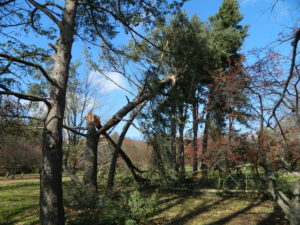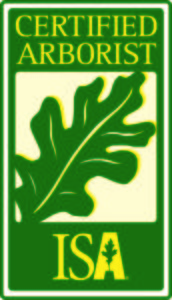
Finding a qualified tree service is important protection for the tree owner. Often, less credible tree companies follow storms for a “quick buck” and move out of town as fast as the storm. Knowing how to hire a reputable arborist can help prevent becoming a victim all over again.
A professionally trained arborist can help determine if a tree can be saved. Even if the tree must be removed, safety and training are still needed to prevent additional damage from the removal. In a time of disaster, a fast recovery is desirable, but not taking the time to hire a reputable tree service may create greater problems in the future.
When hiring a tree care service:
- Certification – Ask if the arborists on staff hold an ISA certification. ISA offers a range of certification credentials from Certified Tree Worker/Climber Specialist to Board Certified Master Arborist. To be certified, individuals must pass a voluntary comprehensive exam. Certification must be maintained through continuing education, which means they should be up-to-date on the latest in arboricultural technology and are knowledgeable of acceptable practices.
 Professional Affiliation – Ask about membership in professional organizations such as the International Society of Arboriculture (ISA) and/or one of its chapters. There are also state arborist associations such as the Louisiana Arborist Association (LAA) and the Professional Arborist Association of Mississippi (PAAM). Affiliation with industry organizations demonstrates a willingness to stay up-to-date on the latest techniques and information.
Professional Affiliation – Ask about membership in professional organizations such as the International Society of Arboriculture (ISA) and/or one of its chapters. There are also state arborist associations such as the Louisiana Arborist Association (LAA) and the Professional Arborist Association of Mississippi (PAAM). Affiliation with industry organizations demonstrates a willingness to stay up-to-date on the latest techniques and information.- Advertisement – Check the local yellow pages directory or newspaper for arborists who list themselves as ISA Certified and/or state licensed arborists or who display the official logos of professional membership. Also look for logos of business accreditation by organizations such as The Tree Care Industry Association (TCIA), who requires they have an ISA Certified Arborist on staff.
- Insurance – Ask for proof of insurance, and then verify coverage with the insurance company. A reputable arborist should have insurance to cover personal and property damage as well as worker’s compensation. If you hire an uninsured tree expert, you can be held liable for any damages or injuries that occur while they are on the job. If you hire a company that is from another state, verify that his insurance covers him for work done in your state.
- References – Ask for references from past customers, and do not hesitate to check them or to visit the locations where the company or individual has done tree care work. A drive-by to inspect their work is easy to do.
- Estimates – Do not be afraid to ask for an estimate, and remember that it is okay to get more than one. You should not always select the lowest bid. And most importantly, get it in writing. Most reputable arborist will have the customer sign a contract, so be sure to review it, and do not be afraid to ask questions.
- It is important to remember that good tree work by qualified professionals is worth the additional expense. Poor work, no matter the price paid, can cost you a great deal in the long run including lethal damage to the tree. Take the time to be an informed consumer and prevent yourself from becoming victimized.
For more tree care information, or to find an ISA Certified Arborist, visit www.treesaregood.org. https://www.extension.purdue.edu/extmedia/fnr/fnr-faq-12-w.pdf
